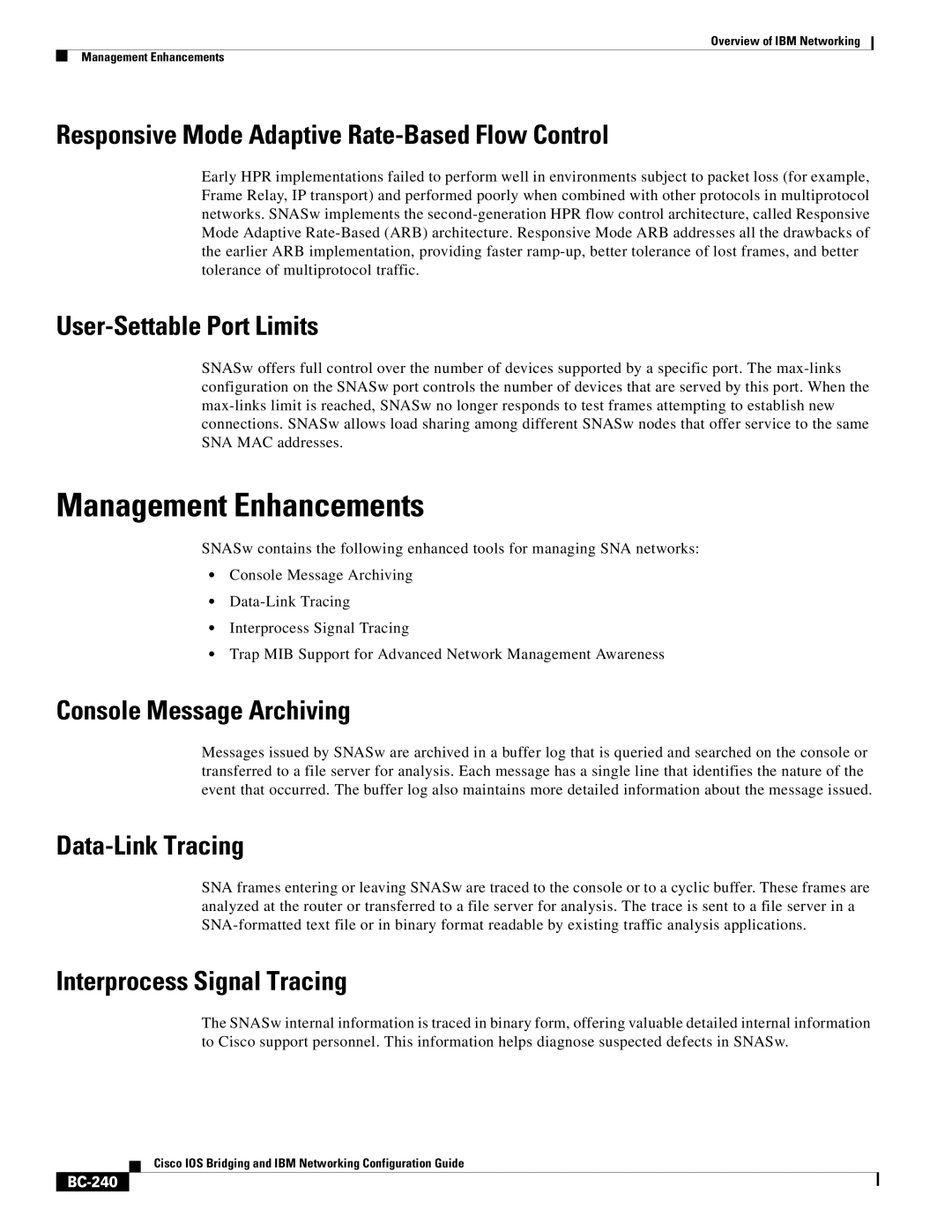
Overview of IBM Networking
Management Enhancements
Responsive Mode Adaptive Rate-Based Flow Control
Early HPR implementations failed to perform well in environments subject to packet loss (for example, Frame Relay, IP transport) and performed poorly when combined with other protocols in multiprotocol networks. SNASw implements the
User-Settable Port Limits
SNASw offers full control over the number of devices supported by a specific port. The
Management Enhancements
SNASw contains the following enhanced tools for managing SNA networks:
•Console Message Archiving
•
•Interprocess Signal Tracing
•Trap MIB Support for Advanced Network Management Awareness
Console Message Archiving
Messages issued by SNASw are archived in a buffer log that is queried and searched on the console or transferred to a file server for analysis. Each message has a single line that identifies the nature of the event that occurred. The buffer log also maintains more detailed information about the message issued.
Data-Link Tracing
SNA frames entering or leaving SNASw are traced to the console or to a cyclic buffer. These frames are analyzed at the router or transferred to a file server for analysis. The trace is sent to a file server in a
Interprocess Signal Tracing
The SNASw internal information is traced in binary form, offering valuable detailed internal information to Cisco support personnel. This information helps diagnose suspected defects in SNASw.
Cisco IOS Bridging and IBM Networking Configuration Guide
